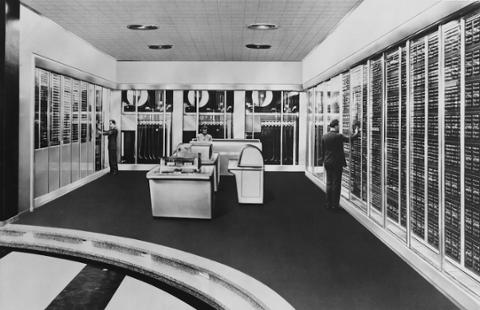For years, state governments have resisted upgrading their aging mainframes and other hardware that support vital services such as unemployment insurance. Now the COVID-19 epidemic is unleashing unprecedented demand for those services, which may lead to a spike in demand for software developers and other technologists who can work with decades-old programs.
In New Jersey, governor Phil Murphy is asking for volunteers who can program in COBOL, in order to assist the state’s unemployment-insurance systems, which have experienced a 1,600 percent increase in claims over the past week (hat tip to Quartz for the link). The next few weeks could see other governments with legacy systems (and aging mainframes) begging for similar help.
For those who’ve never studied it, COBOL (which stands for “Common Business-Oriented Language”) is more than six decades old. It has survived all kinds of eras and trends, including the Cold War and the rise of the internet. And yet it endures, largely because of companies (mostly huge ones with a lot of IT infrastructure) and governments not updating their systems.
It is so embedded, in fact, that many of these companies plan on “modernizing” their existing COBOL-based buildout rather than replacing it with something more modern. That’s according to a survey conducted by Micro Focus, which helps businesses modernize their COBOL setups and therefore may have a vested interest in the language’s survival; but nonetheless, it’s clear that many entities are unwilling to abandon what was built before many current technologists were born.
COBOL is still very much in use at a number of federal agencies that are wrestling in some way with the COVID-19 crisis, including (as of 2016) the Department of Justice, the Department of Veterans Affairs, and the Department of Homeland Security’s Immigration and Customs Enforcement (ICE).
In addition, a number of financial institutions are running COBOL, including (as of 2018) Morgan Stanley, JPMorgan, and Citi, which still post job openings for COBOL-related positions, according to eFinancialCareers. As COVID-19 relief programs for small businesses and other facets of the economy kick into gear, these financial firms could also find increased pressure on their legacy systems, with an accompanying spike in demand for COBOL programmers.
As we’ve pointed out before, this kind of situation is one in which older developers can shine. Not only have these folks mastered new languages; they also retain a grasp on languages and technologies they mastered decades ago. Those whose careers extend back to the 1980s and early ‘90s can work with COBOL, Basic, and assembly language; in addition, they often know everything that larger institutions utilize today in order to keep databases and systems running, including version-control systems, build systems, XML, JSON, databases and SQL, plus Web technologies such as HTML, CSS, JavaScript and server-side languages.
Despite the economic destruction that COVID-19 has already unleashed on the world, it’s clear that companies are still hiring technologists to deal with all kinds of unexpected situations, from the need to quickly spin up e-commerce platforms to making sure that all workers can continue to do their jobs remotely. In-demand jobs include application developer, systems engineer, and systems analyst.
For more COVID-19 content, check out the COVID-19 Jobs Resource Center.



